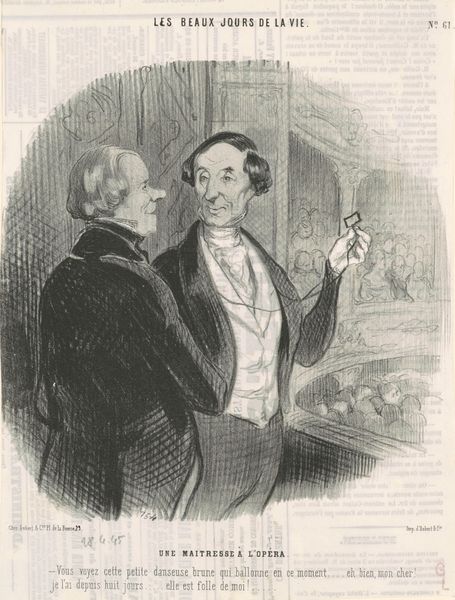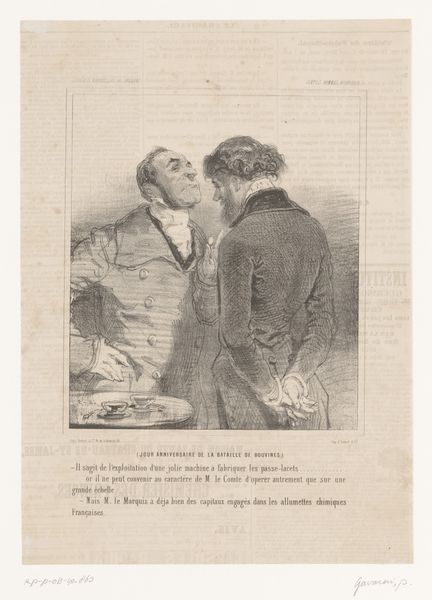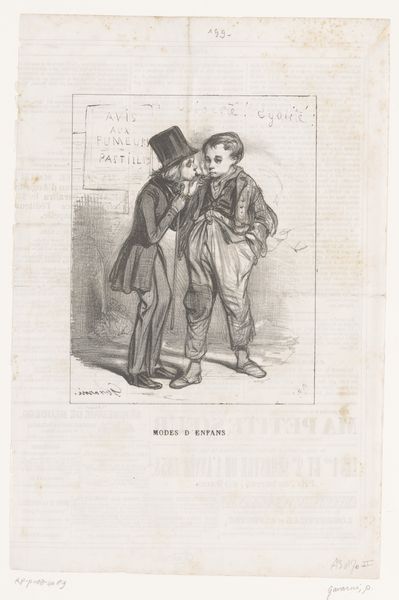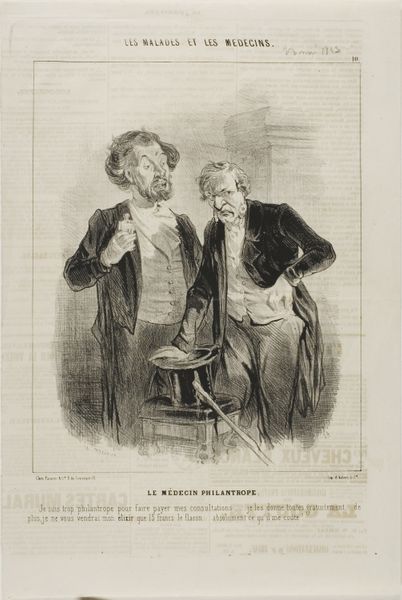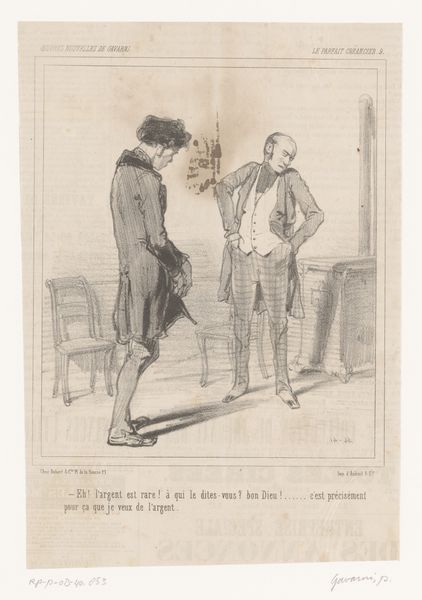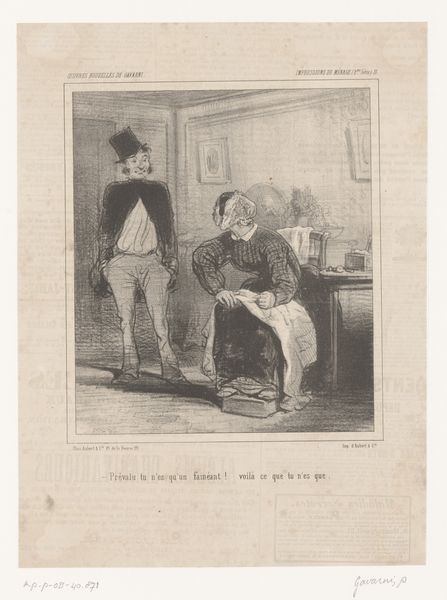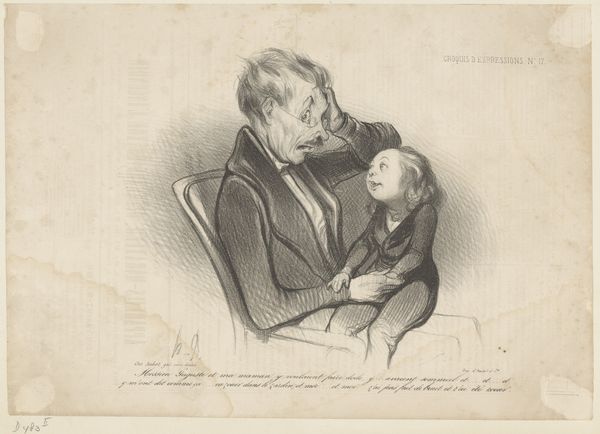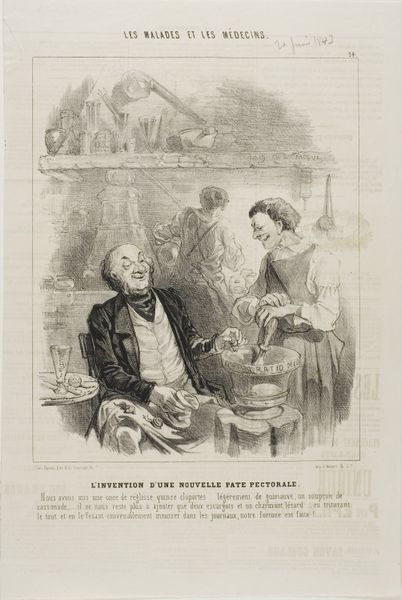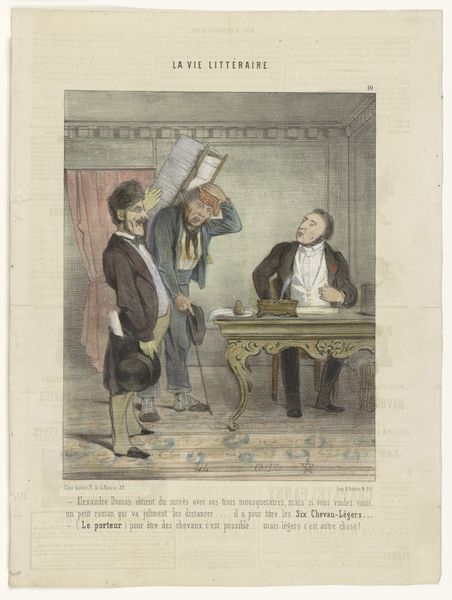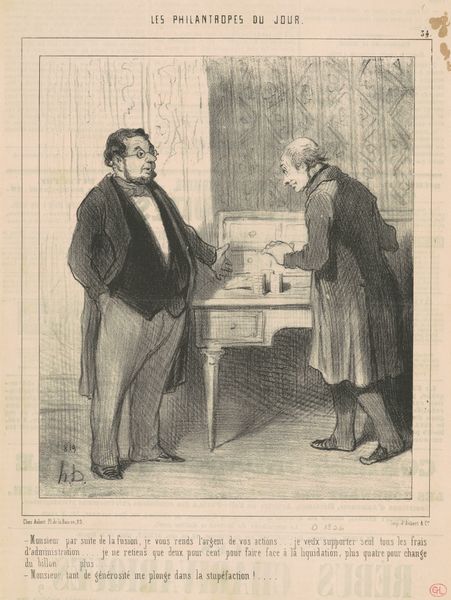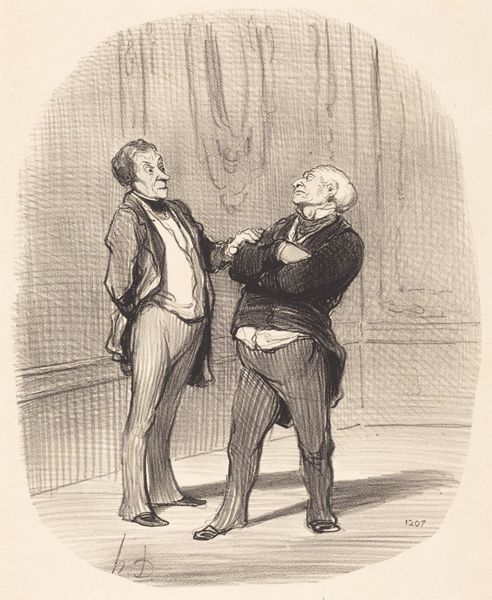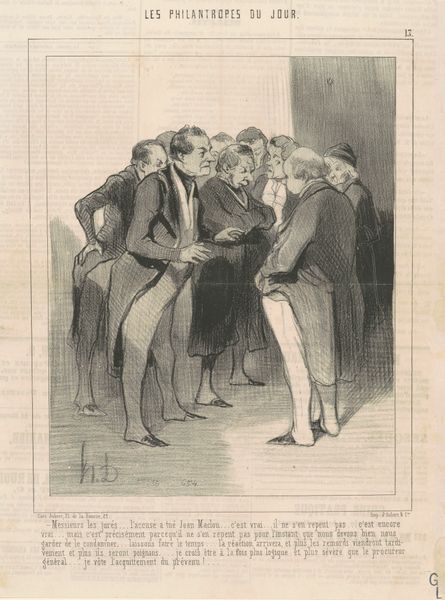
drawing, lithograph, print, ink
#
drawing
#
lithograph
# print
#
caricature
#
ink
#
romanticism
#
genre-painting
Copyright: National Gallery of Art: CC0 1.0
Editor: Here we have "Une Maîtresse a l'Opéra," a lithograph print by Honoré Daumier from 1845. It's made with ink, featuring two men at the opera, and has a sort of satirical feel to it. What can you tell us about this piece? Curator: Well, immediately, I’m drawn to the printmaking process itself. Consider the labour involved in creating and distributing lithographs like this one. It was a powerful, relatively accessible medium for disseminating social commentary. It bypasses the established art world. What does this suggest about its intended audience and its role in society? Editor: It’s a commercial artwork; it wasn’t designed to be showcased in a gallery, but for mass production. It seems it allowed artists like Daumier to reach wider audiences directly, almost like political cartoons, or memes as we know them today. Curator: Exactly! Think about the materiality of ink on paper – its relative cheapness, its reproducibility. Daumier isn't crafting precious oil paintings for wealthy patrons, he’s producing multiples for the emerging middle class. He uses this medium for caricatures which allowed a way of criticizing the social norms. Now, what norms might be exposed in this particular scene? Editor: We have two men, seemingly upper class because they’re at the opera, and there's text implying one has a mistress in the performance. It makes a joke about relationships between social classes. Curator: Yes! And how is this reflected in the artistic style, using lithography techniques of the era? What does the technique of caricature achieve? It's worth understanding not only Daumier’s process, but also the wider context of 19th-century French society. Editor: Right, so Daumier's use of this medium enabled broader distribution, influencing popular opinions through easily consumed social critiques, thereby directly addressing labour and social values, as you stated. It’s almost like a protest via accessible material and its related labour practices. Curator: Precisely. Seeing it through that materialist lens, we begin to unravel the complex relationship between art, production, and society itself.
Comments
No comments
Be the first to comment and join the conversation on the ultimate creative platform.
